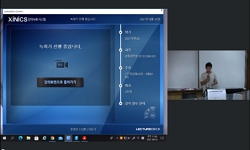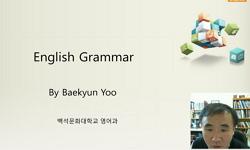This paper mentions as an example the verb original form and the verb which expresses movement especially from modern spoken-language data, and a description of its meaning and usage. The purpose of research for to give the explanation principle which...
http://chineseinput.net/에서 pinyin(병음)방식으로 중국어를 변환할 수 있습니다.
변환된 중국어를 복사하여 사용하시면 됩니다.
- 中文 을 입력하시려면 zhongwen을 입력하시고 space를누르시면됩니다.
- 北京 을 입력하시려면 beijing을 입력하시고 space를 누르시면 됩니다.
근세일본어 동사원형의 의미와 용법
한글로보기https://www.riss.kr/link?id=G3738976
- 저자
-
발행기관
-
-
발행연도
2013년
-
작성언어
Korean
-
주제어
동사원형 ; Original Form ; Meaning of Tense ; Original Form ; Meaning of Tense ; Aktionsart ; Spoken Japanese ; Modern Japanese ; Spoken Japanese ; Modern Japanese ; 의지표명 ; 고지 ; 인칭 ; 시간부사 ; 조건표현
-
자료형태
한국연구재단(NRF)
-
0
상세조회 -
0
다운로드
부가정보
다국어 초록 (Multilingual Abstract)
This paper mentions as an example the verb original form and the verb which expresses movement especially from modern spoken-language data, and a description of its meaning and usage. The purpose of research for to give the explanation principle which was diachronic consistent description about the time meaning of the Japanese verb original form. That is, the mechanism of the change was not touched on in the time meaning of the verb original form of ancient Japanese and present age Japanese until now, differing like the "present" and the "future" in general, respectively. This paper takes the position in which the tense as a Japanese morphology category is not accepted. The "present" tense of the classical Japanese is not a grammatical meaning but a lexical meaning. The verb original form is neutral form grammatically, and the time meaning expressed by context conditions or a vocabulary has a variation.
국문 초록 (Abstract)
본 연구는 근세 구어자료에서 동사원형 그 중에서도 이동을 나타내는 동사를 예로 들어 그 의미와 용법을 기술한 것이다. 연구의 목적은 일본어동사원형의 시간적 의미에 대해 통시적으로 ...
본 연구는 근세 구어자료에서 동사원형 그 중에서도 이동을 나타내는 동사를 예로 들어 그 의미와 용법을 기술한 것이다. 연구의 목적은 일본어동사원형의 시간적 의미에 대해 통시적으로 일관된 설명원리를 부여하는 것이다. 그것은 고대일본어와 현대일본어의 동사원형의 시간적 의미가 대략 '현재'와 '미래'로 달리 나타난다는 것인데 그 변화의 메커니즘에 대해서는 지금까지 논의된 적이 없다. 본 연구에서는 일본어의 형태론적 범주에서의 시제를 인정하지 않는다는 것, 고대일본어의 '현재' 시제는 문법적 의미가 아니라 어휘적 의미라는 것, 동사원형은 문법적으로 중립적인 형태이며, 문맥 조건과 어휘에 따라 나타내는 시간적 의미에 변화가 있다는 주장을 한다. 검토 결과를 정리하면 다음과 같다. (1) 술어의 동사원형이 받는 주어의 인칭 차이에 따라 주체의 현재의 움직임과 주체의 의지표명(=근미래)을 나타낸다. (2) 시간부사와 호응하는 동사원형이 나타내는 사태표시는 지시되는 부사의 의미적 특징에 따라 S<E, S=E, S>E와 같이 달리나타난다. (3) 가정조건구와 호응하는 경우, 화자의 의지표명을 나타내며, 시간적 관계는 S>E이다. (4) 원인을 나타내는 확정조건과 호응하는 경우는 동작주체의 의지적 동작의 완료사태를 나타내며, S<E를 나타내게 된다.











